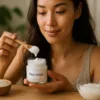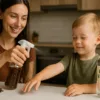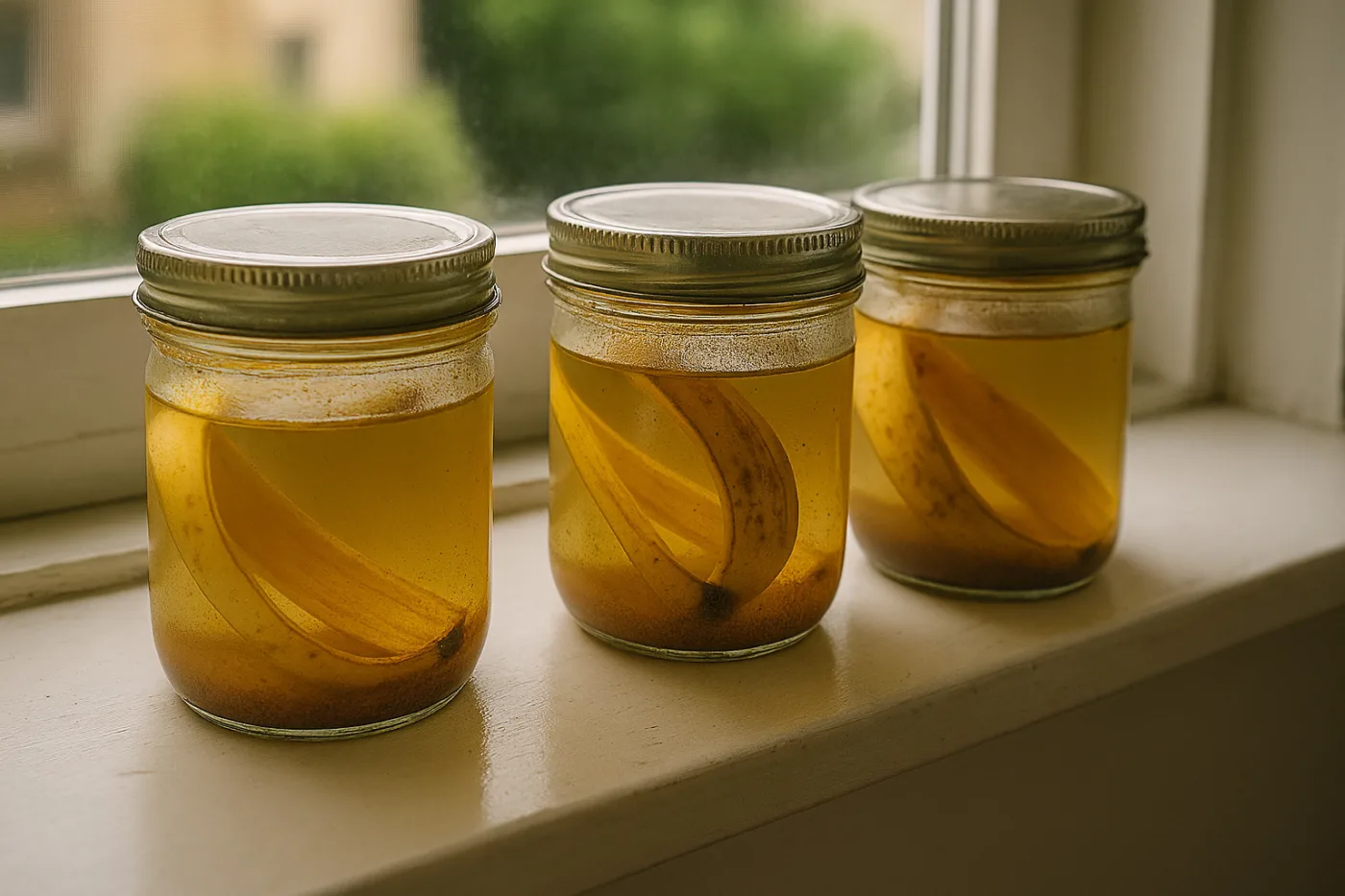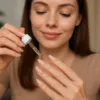If you're one of those people who eats banana peels and then throws them away - without mercy - in the trash, it's time to change that bad habit. This yellow thing that usually ends up in the trash is the secret trump card of all master gardeners. In a world where every inch of balcony competes for the "greenest oasis", the best homemade fertilizer you can make from banana peels is almost a miracle. Not only is it free, but your plants will also bloom with happiness.
What you need for the best homemade fertilizerForget about effervescent pills, liquids with Latin names, and packaging that promises plants the size of the Amazon rainforest. Banana peels are a rich source of nutrients that plants they need for healthy growth, strong roots and lush flowering. The best part? This magic doesn't require a PhD in chemistry—just a ripe banana peel, some water, and a little patience. And last but not least: with every homemade dose of banana fertilizer, you're taking a small step away from chemicals and a big step toward more sustainable gardening.
Why banana peels are a plant-based superfood
If plants could choose their favorite snack, banana peels would be a kind of organic, vegan chip with added vitamins. It is rich in potassium, phosphorus, calcium, magnesium and natural sugars., which feed not only your plants, but also the microorganisms in the soil – those tiny, hardworking workers that actually help you maintain a healthy environment in your pots and beds.
Unlike synthetic fertilizers, which can break down delicate microbiological balance in the soil, natural preparations provide plants with what they need, in the right form and quantityThe shells break down quickly and the nutrients become readily available – without unnecessary residue or chemical pollution.
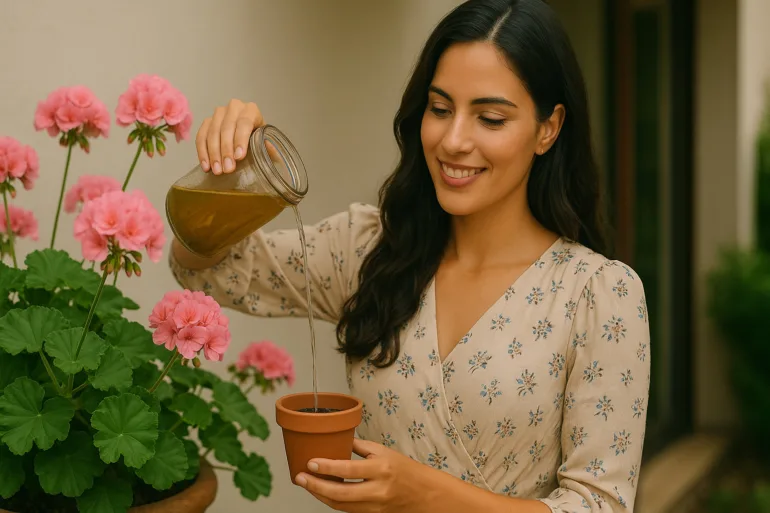
Chemistry in a bag? No, thank you.
Commercial fertilizers often come with flashy packaging and promises like “5x more flowers in 2 weeks,” but using them comes at a price – and we’re not just talking about your wallet. Long-term use of synthetic fertilizers destroys beneficial microorganisms in the soil, which leads to lower quality plants, a greater need for supplements, and ultimately – a garden that is only "held together" with the help of artificial chemistry.
In addition, these fertilizers are often dangerous for pets and children, sensitive to weather conditions and require precise dosing. While you worry about not fertilizing “too much”, your plants are already suffering under the burden of phosphate “overabundance”. But with banana tea, there are no such problems – because nature knows what it is doing.
How to make the best homemade fertilizer: homemade banana liquid fertilizer (liquid gold)
The recipe for a homemade herbal drink is simple, effective, and so easy that you can make it in your pajamas. A one-time combination domestic ingenuity and natural sciences.
Ingridients:
-
- 3–4 ripe banana peels
- 1 liter of clean (filtered or rainwater) water
- Optional: 1 tablespoon used coffee grounds or a handful of compost for extra micronutrient bonuses
Process:
-
- Cut the peels into smaller pieces.
- Put everything in a glass or blender, add water.
- Let the mixture sit for 24–48 hours (or blend it for a faster effect).
- Strain and store the liquid in a bottle or watering can.
Use it. 1–2x weekly, directly at the roots of plants. This natural potion is gentle and safe, so you don't have to worry about "burning" like some store-bought fertilizers. Just remember - if there's any left over, store it in the fridge, otherwise you'll end up with a fermented version that... flies will love.
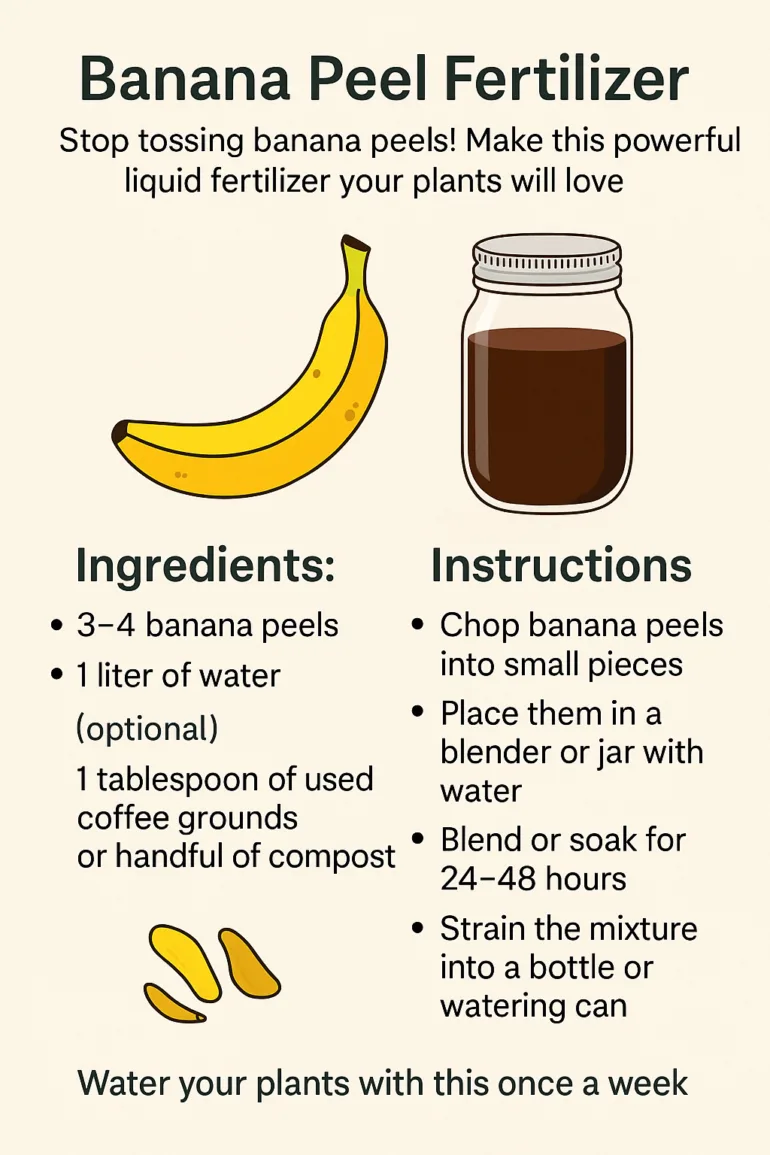
When, how and which plants will be most excited
Liquid banana fertilizer is like a wellness retreat for your plants. It will be most appreciated by those who need additional support for flowering, fruit formation and root developmentEspecially tomatoes, peppers, zucchini, cucumbers, eggplants and the rest of the home vegetable team will experience a real mini-awakening with this drink.
It also works great for fruit trees, flowers, ornamental shrubs and popular houseplants, such as monstera, pothos, ficus, and spathiphyllum. The only ones who will shake their heads (if they had one) are cacti and succulents – they prefer a dry, almost desert environment and don't like too many nutrients.
The easiest way to use fertilizer is to replace one regular watering. Adjust the frequency depending on the plant and the time of year – more in summer, less in winter, same as with lemonade and hot chocolate.
Bonus for hydrangeas and blueberries: banana vinegar
If you're one of those who dreams of blue hydrangeas and lush blueberries in your garden, you'll love this banana vinegar recipe. It works as A gentle, natural way to acidify the soil, which these plants really love.
How to prepare:
-
- Chop the peels and fill them halfway into a glass jar.
- Add a tablespoon of sugar and pour water to the top.
- Cover with gauze or a lid without sealing.
- Let stand for 1–2 weeks at room temperature.
- Strain and dilute (1:10) with water before use.
Use at the base of the plants once every 2-3 weeks, and you will quickly see a difference in color and growth.
Why is this the best homemade fertilizer? Nature + science = magic
What synthetic fertilizers too often do with an “all or nothing” approach, banana peels make gentle, slow and smartPotassium promotes growth and flowering, phosphorus strengthens fruits, and sugars feed microorganisms that improve soil structure in the long term.
With this natural cycle, your garden literally starts to breathe differently. With every watering, you not only feed the plant, but you also build a better environment for its future.
Conclusion: Bananas aren't just for smoothies
Next time you peel a banana, remember – you don't just have a peel in your hand, you have a the basis for a natural, effective and sustainable fertilizerYou don't need a lab, just a little enthusiasm and a love for plants.
Swap the chemical bottle for homemade magic and watch your garden or balcony blossom bloom more naturally, more lushly and more contentedly.

